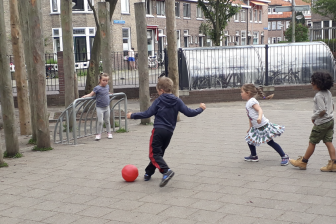
The benefits for children of living near woodland could influence urban policymaking – study
An analysis of children and young people’s proximity to woodlands has shown links with better cognitive development and a lower risk of emotional and behavioural problems – and the lessons learned could help influence planning decisions in urban areas.
Scientists at University College London (UCL) and Imperial College London used data relating to 3,568 children and teenagers, aged nine to 15 years, from 31 schools across London.
This period, they say, is a key time in the development of adolescents’ thinking, reasoning and understanding of the world.
The subsquent study, published in Nature Sustainability, looked at the links between different types of natural urban environments and the pupils’ cognitive development, mental health and overall well-being.
‘Key time in adolescents’ development’
The environments were divided into what planners call green space (woods, meadows and parks) and blue space (rivers, lakes and the sea), with green space separated further into grassland and woodland. Researchers used satellite data to help calculate each adolescent’s daily exposure rate to each of these environments within 50m, 100m, 250m and 500m of their home and school.
After adjusting for other variables, the results showed that higher daily exposure to woodland (but not grassland) was associated with higher scores for cognitive development, and a 16% lower risk of emotional and behavioural problems two years later.
A similar but smaller effect was seen for green space, with higher scores for cognitive development, but this was not seen for blue space. The researchers note though that access to blue space in the cohort studied was generally low.
‘Further investigations required’
Examples of other explanatory variables considered included the young person’s age, ethnic background, gender, parental occupation and type of school, e.g., state or independent. The level of air pollution might have influenced adolescents’ cognitive development, but researchers did not feel these observations were reliable or conclusive, and these require further investigations.
It is already estimated that one in 10 of London’s children and adolescents between the ages of five and 16 suffer from a clinical mental health illness and excess costs are estimated between £11,030 and £59,130 annually for each person. As with adults, there is also evidence that natural environments play an important role in children and adolescents’ cognitive development and mental health into adulthood, but less is known about why this is.
The results of this study suggest that urban planning decisions to optimise ecosystem benefits linked to cognitive development and mental health should carefully consider the type of natural environment included. Natural environments further away from an adolescent’s residence and school may play an important role too, not just their immediate environment.
Mikaël Maes, the study’s lead author, said: “Previous studies have revealed positive associations between exposure to nature in urban environments, cognitive development and mental health. Why these health benefits are received remains unclear, especially in adolescents.
“These findings contribute to our understanding of natural environment types as an important protective factor for an adolescent’s cognitive development and mental health and suggest that not every environment type may contribute equally to these health benefits.”
Click here for the full study.




